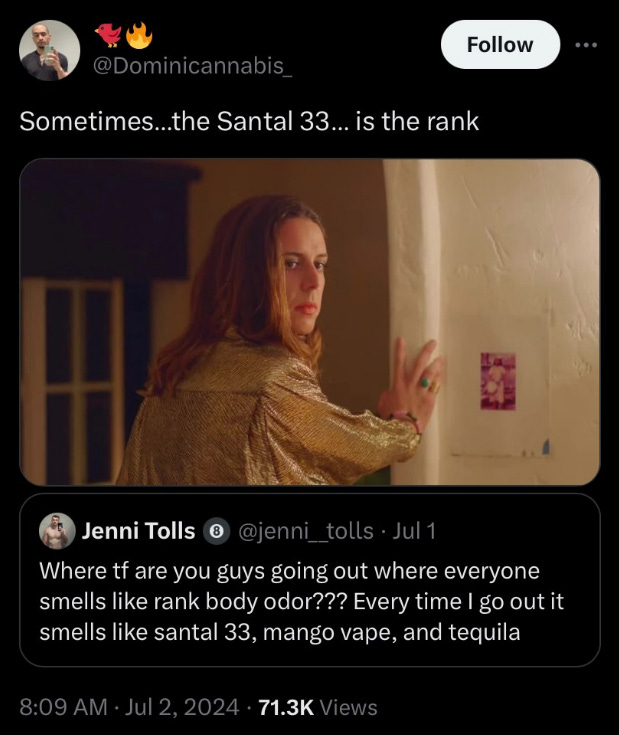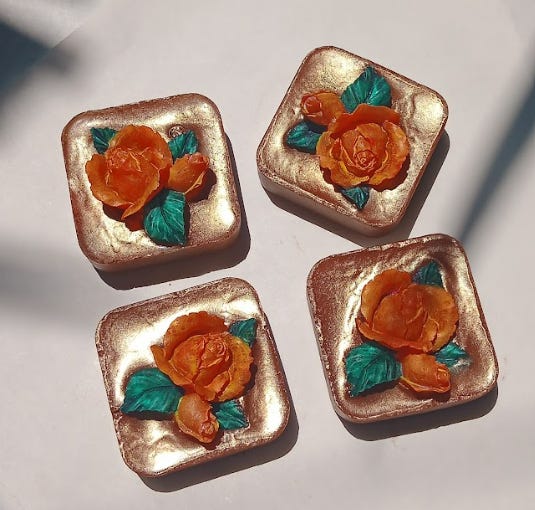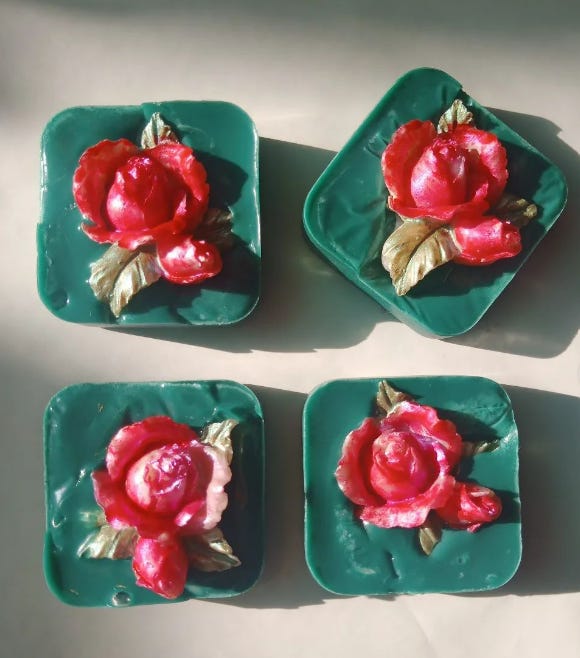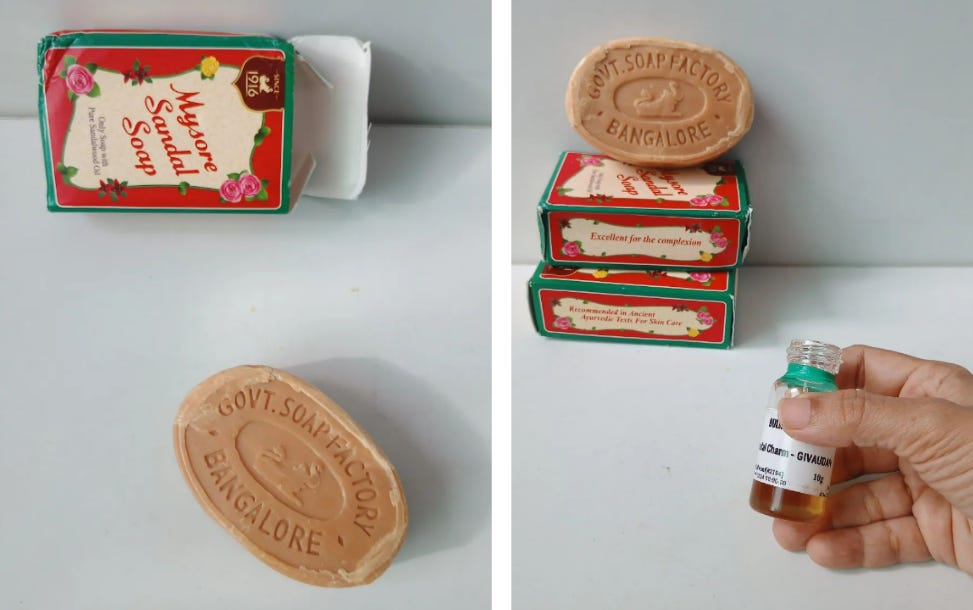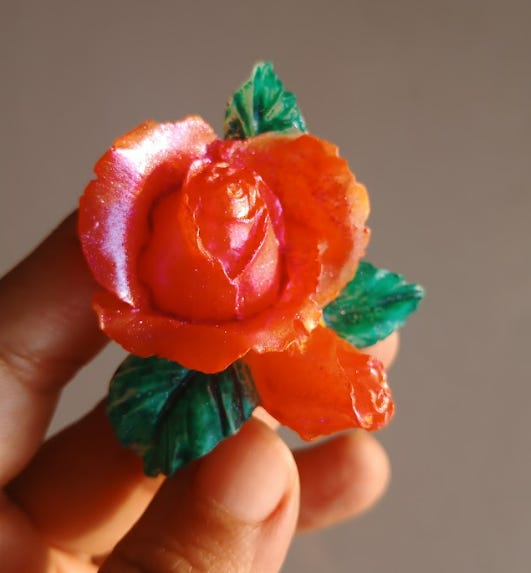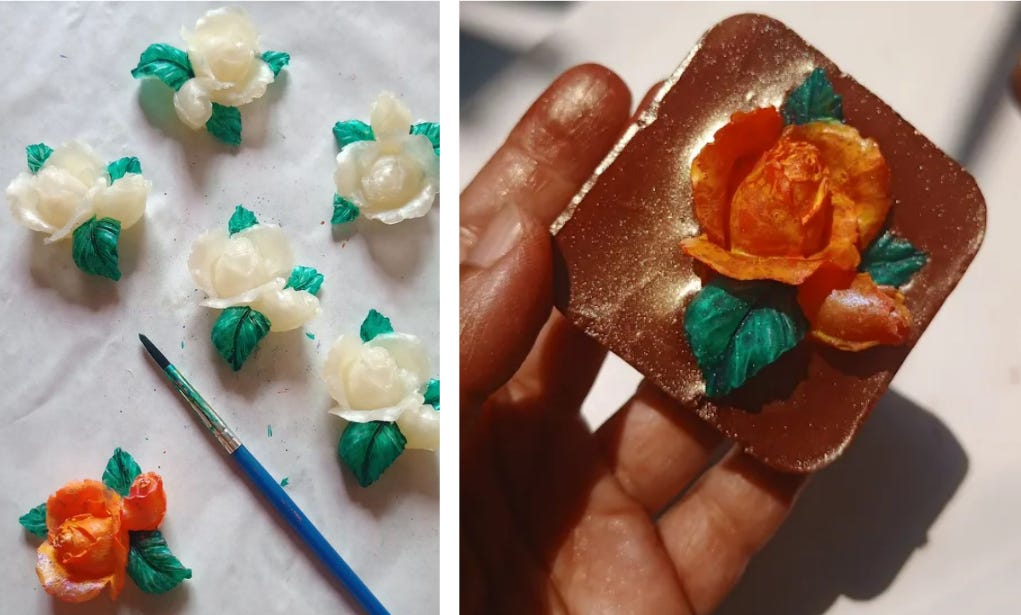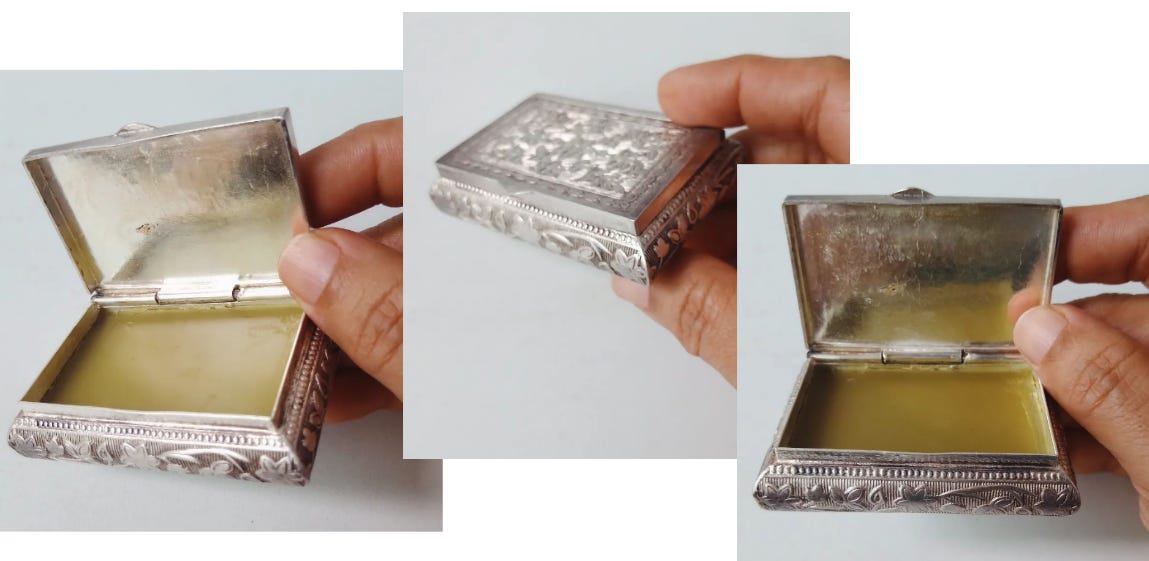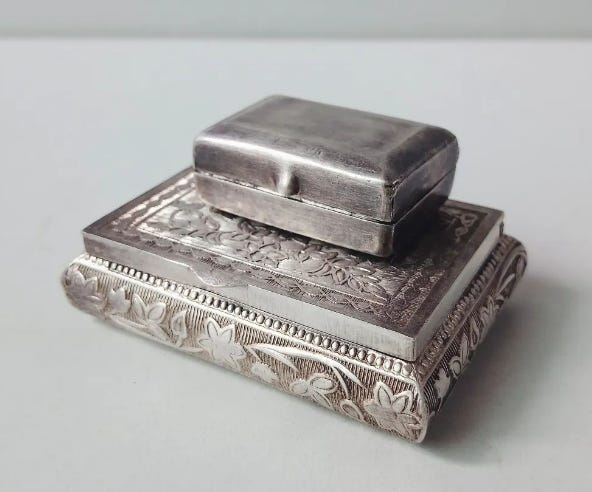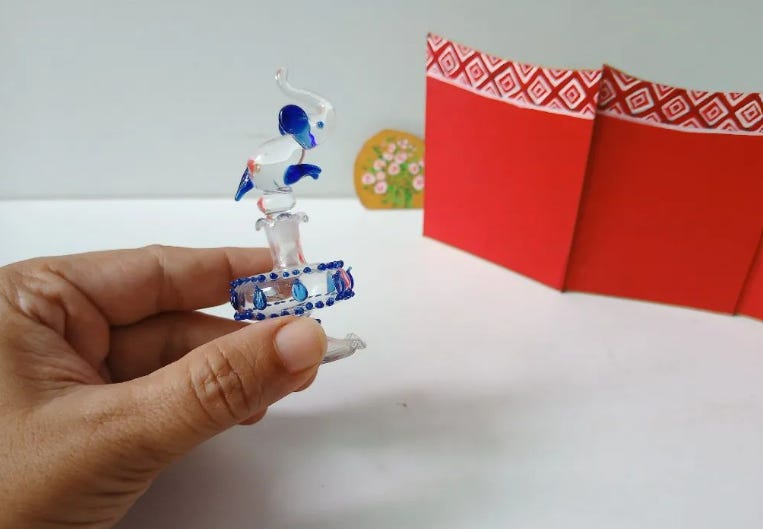
I wasn’t going to write a newsie till next month when my essay “Flowers, Fragrance, Flies” would be up on the Met museum’s website but I emerge from my lengthy brain-break to write on a topic I have very strong feelings on — Santal 33, the default signature scent of douchebag-scumbag hipsters from NYC to Bombay.
Santal 33 was released in 2011 by Le Labo, a brand that gained hype for simulating a “laboratory” experience for consumers. No to the stuffy old lady-approach to sniffing perfumes on the fourth floor of Harrods, no to the sales-person assaulting passers by in the mall with fruity sprays, no to smelling the cacophony of perfumes under fluorescent tube lights in the Duty-free section of the airport. “The Lab” cleverly took the low cost-high profit mass-manufacture model to deliver a simulacra of a bespoke experience that seduced customers. The attractive guy-with-beard-and-man-bun wearing a labcoat behind the bar chats you up while apparently formulating a one-of-a-kind fragrance-cocktail just for you. Le Labo even prints out a label with your name on it because you are so special. Low-effort intimacy in a wink and it’s social media friendly too. I will go a little further and gamble that Santal 33 is a smell that distills the zeitgeist of me-me-me social media posts. It’s the smell of self-surveillance and exhibitionism.
Social Media Usage: 2005-2015
65% of adults now use social networking sites – a nearly tenfold jump in the past decade
ANDREW PERRIN
2011 was an interesting year. A decade after 9-11, America had moved onto other wars with its characteristic arrogance returning in full swing. This was a time of Silicon Valley dating apps that curiously made “ghosting” a dynamic verb in the English language— abandon relationships over a text, or not, there are no consequences. Dime a dozen psychotherapists have sprung up to validate you. Once more, fake-it-till-you-make-it.
Santal 33, as articulated by many Twitter users over the years, however, has come to embody the scent of a ghost lover, haunting emotionally scarred people wherever they went, from the cab to the office, to the cafe, to the club. The proliferation of Western Capitalist therapy, the sort that lets people know that it’s OK to set hard boundaries and prioritise self-care, nudged individuals to lean into victimhood, personal traumas and consumerism. Instead of building relations with and relying on family, friends and neighbours, why not outsource to an app? No one has the time.
This is also a period when, I think, a number of middle-aged women from the privileged college educated trad-wife class, took up yoga and enrolled in borderline illegal multi-level marketing of aromatherapy oils that were “ethically” produced in the Third World. I have to confess, that by the end of 2017, this is how I found perfumery.
After living out of my savings and being published internationally, collecting all the Prestige Cookies, I was still facing an art world-system that was empty of opportunity, and full of exploitation. So, what was a girl with two fancy degrees in art supposed to do— compete with domestic Nepo-babies who had now come of age and were eschewing family business in favour of securing exciting grants and residencies abroad?
Essential oils were indeed MLM-sold to me by an American-educated Indian woman abroad. And I bought them as I had no access to materials in India. It would take around four years to figure out a local supply through a painful process that involved cold-calling uncle-men across India who did not understand what I was saying! “We sell by the kilo” *drops the line*.
Santal 33 smells to me of intergenerationally wealthy children who have no experience of failure, no business-savvy, no discernment, ample fragility, zero resilience and no regard for anyone they consider beneath them. On top of that, they’re cheap.
This is how I first encountered the Le Labo product. In 2018, a hipster-designer had me come all the way from Pune to his Bombay office to consult on creating an exact replica for his new product, a potpourri home-fragrance. Santal 33, he said, captured his very essence. If I could use real sandalwood oil “just like Le Labo”… —I had to stop him right there to educate him on how sandalwood grows, how the oil is harvested, why it is so expensive and why real botanical extracts are never utilised in the fragrance business. I came home to Pune with a sample spritz of the perfume and spent my week chasing/arguing/haggling with the hipster’s twenty-something twink personal assistant over my invoice. It was a demoralising experience that I learned from. (All my Bombay experiences leave a bad taste in my mouth — the infrastructure is crumbling, dead rats litter the most expensive retail streets of Colaba, and tightly corseted women teeter out of their BMWs to enter a cafe next to a slum. And Hermes is better pronounced as Herrmej to your taxi driver).
It makes sense to me that such a perfume is a significant marker of our times precisely because it lends us the impression of value and high aesthetics while actually being empty of anything real. We are being marketed some authentic sense of the sandalwood, a historically and culturally significant tree whose heartwood yields a santanol-rich oil full of medicinal properties while in fact spraying on an artless corporate-synthetic rendition instead.
Parallel to Le Labo is the Mysore Sandalwood Government Soap that purportedly uses real sandalwood oil — though people tell me the soap these days does not smell like it used to when their grandmothers used it. I wondered if there was some truth to this because synthetics have been around for well over a century. If they used 100% real sandalwood oil, the price of this mass product would be exorbitant. So, I bought the soaps as well as some synthetic aroma chemicals that simulate creamy facets of sandalwood oil in order to recreate a scent that plays on the real and the artificial.
Jicky, the First Modern Perfume
The first fragrance to incorporate synthetic ingredients and natural extracts, making it one of the most significant perfumes in the history of scent design
Jimmy Stamp
One sniff of these government soaps and I knew it was identical to the “Sandal Charm” synthetic blend that is manufactured by Givaudan. So this is what the government *probably* uses in their cold-processed commercial soaps. It’s a papery-syrupy sugary scent that is far away from Sandalwood itself.
Armed with this knowledge, I went to work to create a combination of the fake “Santal 33” and fake “Mysore Sandalwood Government Soap”. This formula went into my version of a luxury bar.
I poured a pearlescent soap base into a mould to create roses; I painted each rose with soap-dye and mica pigments to make them appear shiny in sunlight. I made an edition of 8 and sold out within days. Did my buyers think this was a luxurious experience? I don’t know because collectors of my soap refuse to use them, and prefer to keep them preserved in a cabinet.
Now, a bespoke experience with me is very special indeed. I just hosted two clients in the last three months and the smell session goes on for a leisurely two hours. Smell fatigue is a real phenomenon and I prefer taking breaks during the process. I prepare a simple lunch and a fragrant dessert if I can manage it. The coffee is always enhanced with some Edible Perfume™ made with Jasmine sambac extract, and the tea is an impeccable Assam. Both are sourced from my trader who supplies to boutique hotels across India. The exact quality of beverage being served at some palace-hotel in Udaipur is what I offer as an experience to my clients who invariably become fast friends. And I think of this intimacy as luxury. Here, the stale ghosts of former scents are exorcised.
In Stock:
Marigold & Coriander (Assam Tea)
Dragon’s Blood (Assam tea)
Mysore Sandalwood Coffee
Perfumes: Rosewater, Orange Blossom, Lavender Absolute, Red Sandstone



